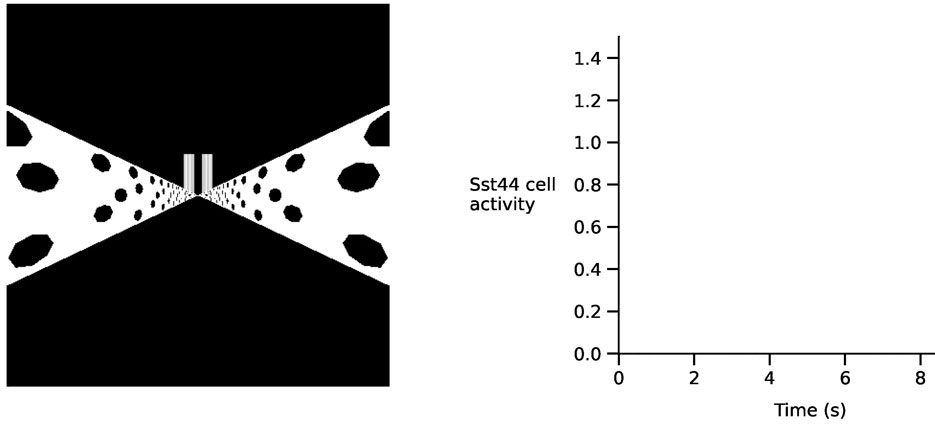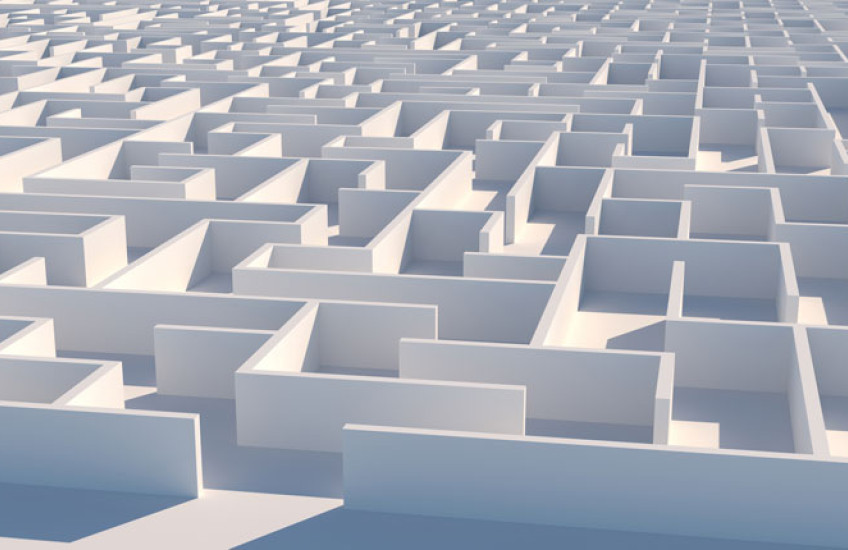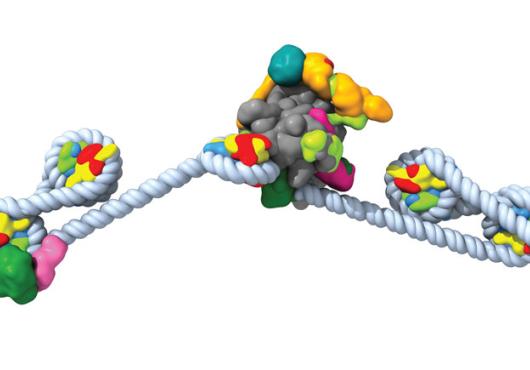At a glance:
- Researchers identify a subset of neurons that become active when mice navigating a maze correct an error in orientation.
- The neurons, located in the posterior parietal cortex, may play a role in helping the brain learn navigational routes.
- The team is further investigating the role of these neurons during navigation and what they are doing in other brain regions where they are found.
During routine navigation in daily life, our brains use spatial mapping and memory to guide us from point A to point B. Just as routine: making a mistake in navigation that requires a course correction.
Now, researchers at Harvard Medical School have identified a specific group of neurons in a brain region involved in navigation that undergo bursts of activity when mice running a maze veer off course and correct their error.
The findings, published July 19 in Nature, bring scientists a step closer to understanding how navigation works, while raising new questions. These questions include the specific role these neurons play during navigation, and what they are doing in other brain regions where they are found.
“Navigation has been studied a lot but, to our knowledge, this is the first time we’ve identified this type of error-correction signal,” said senior author Christopher Harvey, associate professor of neurobiology in the Blavatnik Institute at HMS. “I think this study adds a new direction where we can go with navigation research.”
Making a course correction
To understand navigation, the Harvey lab has been studying the posterior parietal cortex, a region near the back of the brain involved in spatial reasoning, as well as learning and planning movements. The cells that make up that region, the team said, have largely remained a black box.
“There are all these different cell types in that area, but when we started this project, we didn’t know much about what these cell types might be doing,” explained lead author Jonathan Green, a research fellow in neurobiology at HMS.
Science & Medicine, Delivered
Harvard Medicine magazine in your inbox
Elucidating the roles of these different cells is essential for understanding how they work together to form the neural circuit that powers navigation in that brain region.
To interrogate the cell types in the posterior parietal cortex, Green and Harvey turned to colleague and study co-author Michael Greenberg, the HMS Nathan Marsh Pusey Professor of Neurobiology. They borrowed a tool developed in his lab that allows scientists to label cell types in a more precise way. The researchers used a viral capsule to inject a gene-regulatory element into the posterior parietal cortex, which induced a subtype of neurons to express a blue fluorescent protein. In this way, the researchers selectively tagged these neurons to monitor their activity.
With the neurons labeled, the team used an experimental technique developed in the Harvey lab that involves placing mice in a virtual reality maze: A mouse runs on a ball, while a large surround screen displays a spatial navigation task. In this case, the task was moving through a T-shaped maze to find a reward at one end. As the mouse performed the task, the researchers recorded neural activity in the posterior parietal cortex.
The researchers found that when a mouse made and corrected a mistake while navigating, the subtype of neurons became active. This held true even when they guided the mouse to err, either by rotating the maze or changing the color cues. However, if the mouse didn’t make a mistake, or made a mistake but didn’t correct it, the neurons didn’t fire.

On the left is a mouse’s view as it navigates a T-shaped maze in virtual reality to find a reward. Near the end, the mouse corrects a navigational error, prompting a burst of activity in a subtype of neurons in the posterior parietal cortex that is captured by the peak on the graph. Video: Harvey lab.
When the neurons became active, they did so in unison, prompting a follow-up experiment in which the researchers stimulated the cells with light. They found that the neurons are essentially hardwired to each other, meaning that the electrical current telling them to fire can flow directly from one cell to the next.
“These neurons were all activating together right at these moments when the mouse deviated from its route and had to correct back to get the reward, which we think means they could be really important for the learning or correction of navigational routes,” Harvey said.
A broader signal?
The findings provide tantalizing evidence that this subset of neurons play an essential role in helping the brain correct navigational errors, but the researchers are eager to delve into the how and why.
Harvey is interested in whether this error-correction signal aids the brain in learning navigational routes — something he calls “a missing piece of the puzzle for how navigation happens.” To explore this idea, the researchers are doing experiments in which they disrupt the activity of the neurons, and see how the mouse’s navigational ability is affected.
“We want to find out if this signal is involved in driving corrections on a moment-to-moment basis, or if it is acting on a longer time scale by helping the circuit learn the correct actions over time,” Green said.
Although the study was done in mice, Green noted that humans have an analogous cell type, so “this error-correction signal that we see in mice could actually be quite relevant to what is happening in our brain.” However, more research is needed to confirm whether this is the case.
Interestingly, this subtype of neurons are also present in other brain regions that are heavily involved in navigation, as well as in the visual cortex and the hippocampus, the epicenter of learning and memory. Thus, Green would like to investigate what the neurons are doing in these other regions to understand whether they play a broader role in error correction and learning.
The researchers also plan to apply their experimental approach to other subsets of neurons in the posterior parietal cortex — many of which are also present across multiple brain regions — in the hopes of identifying more cell types with specific functions.
“If we can understand what all these subsets of neurons are doing in different brain areas, the hope is that we can get at some generalized functions for the cells that move us closer to understanding how this neural circuit, which is replicated across brain areas, works,” Green said.
Authorship, funding, disclosures
Additional authors on the paper include Carissa Bruno, Lisa Traunmüller, Jennifer Ding, Siniša Hrvatin, Daniel Wilson, Thomas Khodadad, and Jonathan Samuels of HMS.
The research was supported by a Lefler Fellowship, a Life Sciences Research Foundation Fellowship sponsored by Vertex Pharmaceuticals, a Harvard Brain Science Initiative Postdoc Pioneers Grant, a Long-Term Fellowship from the Human Frontier Science Program, and the National Institutes of Health (F32MH118698; DP1 MH125776; R01 NS089521; R01 NS108410; RF1 DA048787; R01 NS028829).
Hrvatin is a member of the scientific advisory board and Greenberg is a consultant for Apertura Gene Therapy.






